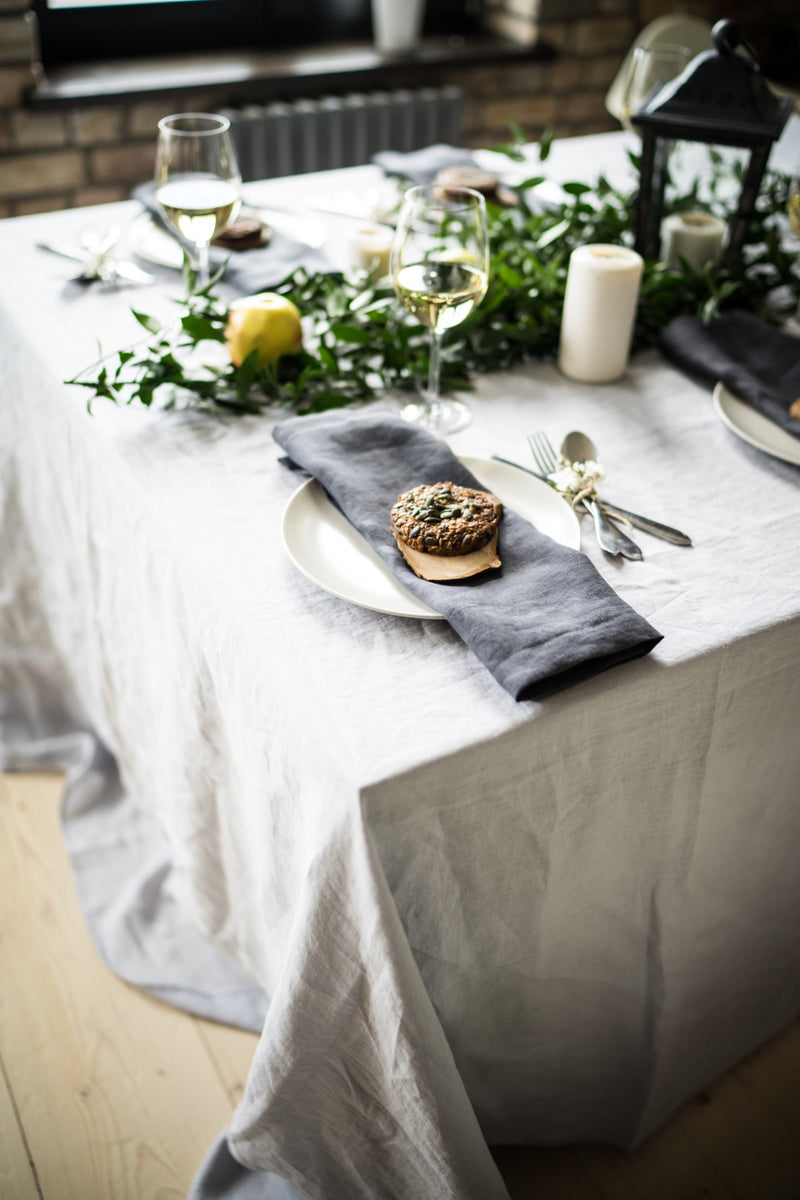Stylish Table Runner Concepts: Change Your Dining Experience
Stylish Table Runner Concepts: Change Your Dining Experience
Blog Article
Bed Linen Fabric Innovations: Checking Out Modern Trends and Creative Applications in Layout and Textile Industry
From lasting manufacturing techniques to innovative weaving innovations, the development of linen is reshaping the landscape of the textile sector. As we dive right into the worlds of imaginative layout applications and the emergence of linen blends and hybrid textiles, a new chapter unravels in which linen's role in future textile developments takes facility phase.
Lasting Practices in Bed Linen Production
Lasting methods in bed linen manufacturing have ended up being increasingly important in the fabric sector's efforts to decrease ecological effect and advertise honest sourcing approaches. Linen, an all-natural fiber stemmed from the flax plant, offers a series of benefits such as sturdiness, biodegradability, and breathability. Nevertheless, traditional techniques of linen production can involve substantial water consumption, chemical usage, and energy-intensive processes.
To address these difficulties, many fabric producers are taking on sustainable techniques throughout the linen manufacturing process. This includes sourcing flax from natural farms that stay clear of harmful chemicals and chemicals, applying water-efficient retting techniques to extract fibers from the flax stalks, and using green dyes and surfaces. Additionally, some business are buying sustainable power resources to power their manufacturing facilities and minimizing waste with recycling and upcycling efforts.
Technological Advancements in Linen Weaving
With the expanding focus on lasting practices in linen production, the textile sector is currently witnessing a surge in technological improvements especially aimed at transforming the art of bed linen weaving. These advancements are improving the means bed linen fabrics are produced, providing boosted effectiveness, top quality, and creativity in weaving techniques.
One of the essential technical improvements in linen weaving is the assimilation of digital looms. These innovative looms are equipped with software that enables elaborate and complicated styles to be woven with accuracy. By digitizing the weaving process, producers can accomplish better consistency and accuracy in their linen fabrics.
Moreover, innovations in thread spinning technology have enabled the production of finer and more resilient linen yarns - table cloths. This results in softer and smoother linen fabrics that maintain their high quality also after numerous usages and cleans
In addition, the growth of environment-friendly dyeing procedures and coatings for bed linen textiles is obtaining grip. These sustainable techniques not just minimize the ecological impact but additionally satisfy the enhancing consumer demand for morally created textiles.
Creative Design Applications for Bed Linen
Ingenious creative approaches are progressively shaping the innovative layout applications for bed linen in the textile market. Bed linen's all-natural visual appeal and capability to mix with various other fabrics make it a favorite option for developing unique garments and accessories that provide to the eco mindful consumer.
In addition, designers are explore bed linen in home decor, using its resilient and breathable nature to craft elegant home furnishings such as curtains, bed linen, and furniture. The appearance and drape of linen bring a feeling of refinement and convenience to indoor spaces, adding a touch of elegance to modern homes.

Linen Blends and Hybrid Fabrics

Hybrid textiles, on the various other hand, take the principle of blending a step further by including added components such as metal threads, recycled materials, or conductive fibers. These innovative fabrics not just increase the style opportunities however likewise introduce functional aspects like conductivity, antimicrobial buildings, or boosted toughness. Hybrid fabrics are increasingly being made use of in numerous markets, consisting of style, interior style, and technical fabrics, where the demand for multifunctional materials gets on the rise.
Linen's Role in Future Textile Innovations

In the realm of future fabric technologies, linen is expected to be a crucial gamer in the growth of advanced practical materials. Designers and scientists are checking out methods to boost bed linen's inherent qualities with technological improvements, such as including clever fabrics, nanotechnology, and performance finishes. These developments aim to raise linen's performance qualities, making it appropriate for a more comprehensive variety of applications, from activewear to safety apparel.
In addition, the mix of bed linen with various other all-natural or artificial fibers opens limitless opportunities for developing unique fabrics with distinct residential properties and capabilities. By leveraging bed linen's features and discovering cutting-edge blends, the fabric sector is positioned to present interesting advancements that cater to evolving customer demands and sustainability demands.
Final Thought
Finally, the exploration of lasting methods, technological developments, creative layout applications, bed linen blends, and its function in future textile innovations highlight the continual advancement of linen fabric in the modern layout and fabric market. With a concentrate on innovation and creativity, the versatility and eco-friendly nature of bed linen make it a beneficial material for makers and designers alike, paving the means for additional developments and advancements in the area of textiles.
As we delve into the worlds of creative design applications and the emergence of bed linen blends and crossbreed materials, a new phase unfolds in which linen's duty in future fabric innovations takes center stage.
Discovering the combination of bed linen with other textiles has led to the emergence of cutting-edge hop over to these guys blends and hybrid fabrics in the contemporary fabric market. Bed linen blends use an unique mix of the qualities of bed linen with those of other fibers, resulting in textiles that possess improved residential properties such as enhanced resilience, boosted draping, and reduced wrinkling.The development of linen blends and hybrid materials has actually set the stage for Bed linen to play a pivotal function in driving future fabric advancements.In the realm of future textile technologies, linen is anticipated to be an essential player in the growth of advanced useful materials.
Report this page